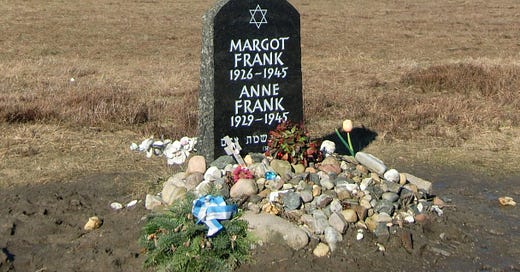The betrayal of Anne Frank, etc.
Reimagining Anne's story as a police procedural does no one any good.
Welcome to my new subscribers! I’m glad you’re here. This email comes out once a month. Otherwise, find me on Twitter, Instagram, or (if you must) Facebook.
What I’m writing
As I’ve mentioned earlier, I’m currently at work on a book about Anne Frank for Jewish Lives, a series of short biographies published by Yale University Press. Although it’s a biograp…
Keep reading with a 7-day free trial
Subscribe to Ghost Stories to keep reading this post and get 7 days of free access to the full post archives.



